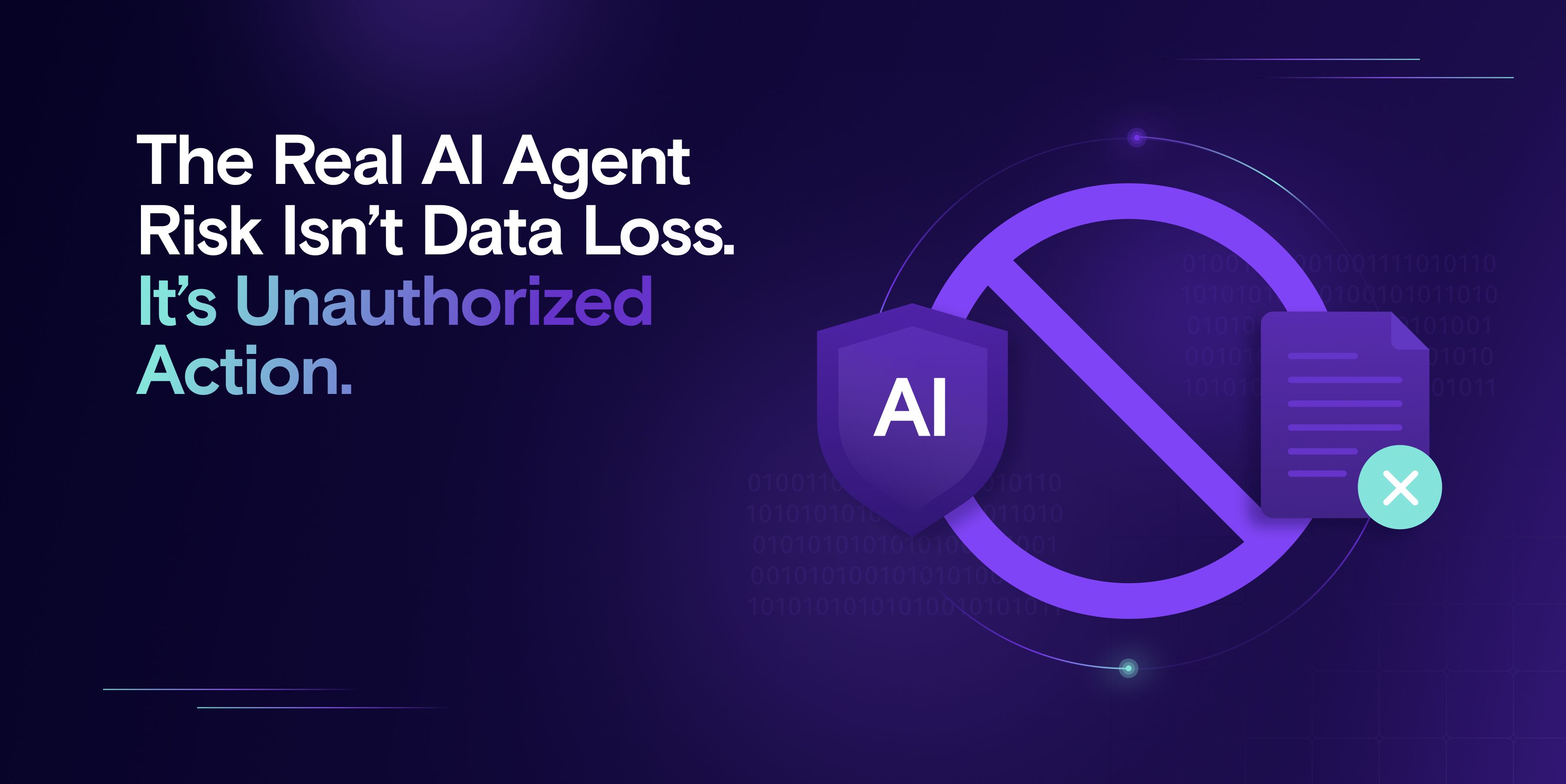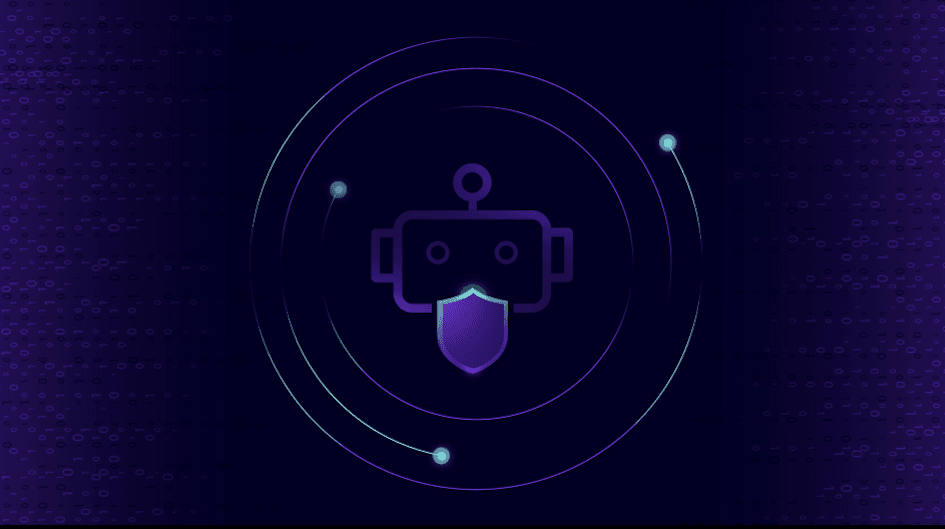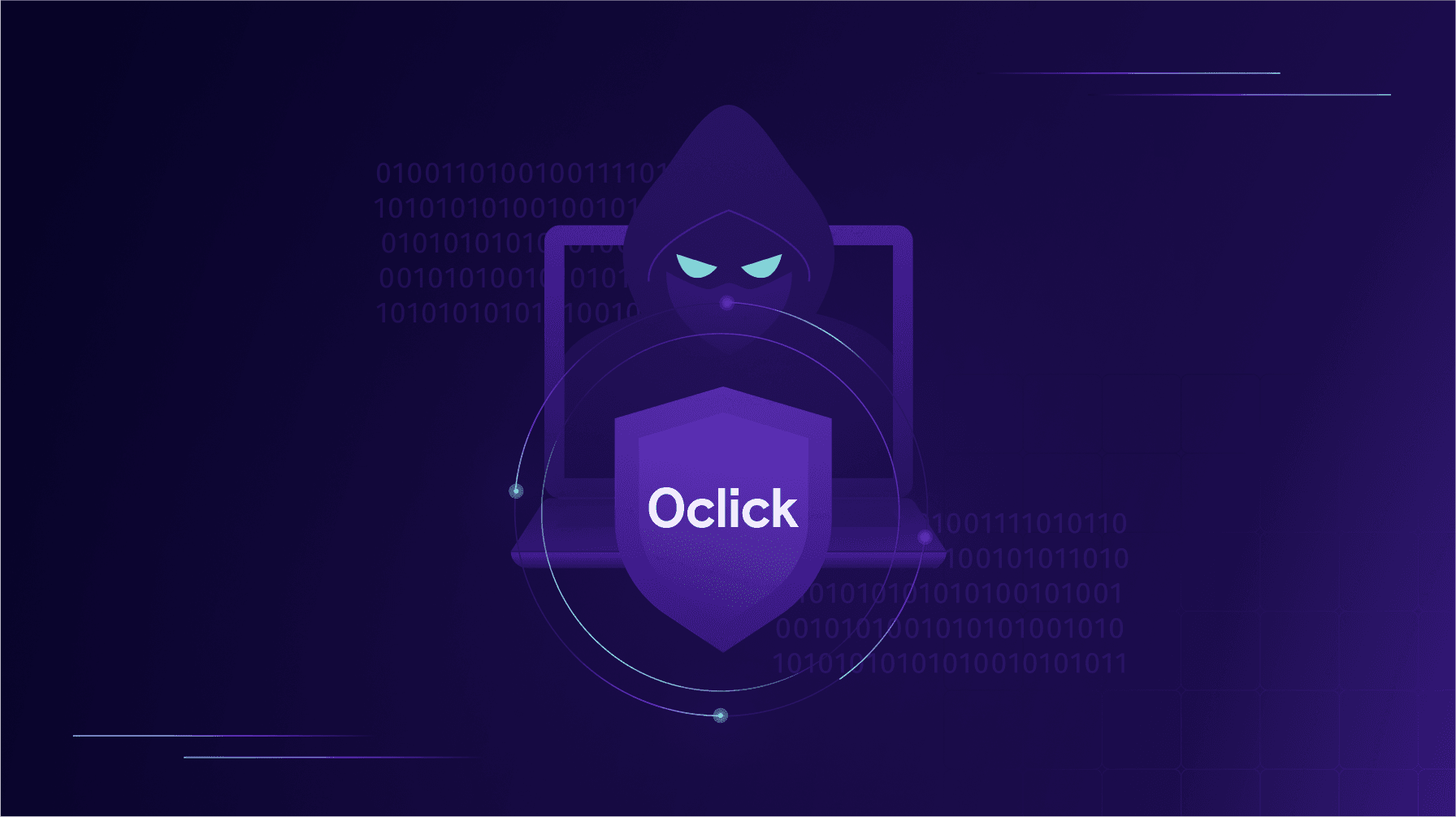The Real AI Agent Risk Isn’t Data Loss. It’s Unauthorized Action.

Your AI Agent just updated a vendor’s payment details in your Enterprise Resource Planning (ERP) system based on a seemingly harmless prompt. No data was exfiltrated. No access policy was violated. But now, a $250,000 payment is sitting in a fraudulent bank account.
This is the new face of AI risk.
As enterprises adopt AI Agents - either off the shelf or custom built, security teams are facing a fast-moving shift. These agents aren’t passive tools, they’re dynamic, autonomous actors embedded directly into business workflows. They engage with sensitive systems, carry out tasks on behalf of users, and make decisions in context.
And yet, most security strategies today remain narrowly focused on protecting data - where it lives, who can access it, and how to prevent it from leaking.
They monitor access, apply Data Loss Prevention (DLP), and enforce encryption. All essential. But they don’t address where the real damage happens, the AI Agent’s action.
AI Agents Are Actors, Not Just Interfaces
Unlike traditional software that waits for input or displays data, AI Agents interpret natural language, reason over enterprise knowledge, and trigger downstream actions often with broad permissions.
In the example above, a finance agent integrated with an ERP system and updated vendor records based on what seemed like a legitimate request. But the context was flawed, verification steps were skipped, and the outcome was a high-dollar loss.
No personally identifiable information was accessed. No alerts were triggered. The failure wasn’t informational, it was operational.
When Logic Fails, DLP Won’t Catch It
Many organizations start their AI security efforts by monitoring for data leakage. That’s a reasonable first step but it won’t stop an AI Agent from making a harmful decision, even with DLP controls in place.
Attacks like prompt injection don’t breach systems. They exploit logic by feeding agents crafted instructions to bypass controls or take unintended actions. Even without malicious intent, vague prompts or over-permissioned agents can cause damage. “Update payment details.” “Approve invoice.” “Resend credentials.” These are technically valid actions, but contextually dangerous without the right safeguards and visibility.
Most traditional security tools simply record that the action happened. They don’t assess whether it should have happened. And once an agent sends the email or updates the record, there’s no clean way to roll it back.
Identity, Intent, and Context Are Security Blind Spots
To truly secure AI Agents, we need to go beyond just watching what they access. We need to understand who they’re acting on behalf of, what permissions they hold, and why they’re making decisions. Otherwise it becomes a game of “whack-a-mole”.
Without that context, their behavior is a black box. And in high-impact business workflows (like finance, HR, support, operations, etc.) that’s not a risk we can afford.
It’s helpful to reframe the challenge, for decades, we’ve learned how to secure access. But AI Agents require us to secure autonomy. That means evaluating intent, monitoring behavior in real time, and enforcing policies that define not just what agents can see but what they’re allowed to do, and under what circumstances.
Not Every Risk Involves a Breach. Some Just Involve a Bad Call.
This shift from data loss to operational disruption fundamentally changes how we think about risk.
A support agent that grants an unauthorized refund. A scheduling assistant that makes a private meeting public. An HR agent that emails onboarding materials to the wrong candidate. These incidents may not trigger any alarms, but they negatively impact trust, and disrupt the business.
Focusing on data only, acts like these can go undetected until the damage is already done. That’s what makes them so tricky and so critical to address.
A New Security Model for a New Class of Technology
AI Agents aren’t just smarter apps. They represent a new class of enterprise actor cross-functional, natural language-driven, and embedded in live workflows.
Securing them requires moving beyond visibility into actual control. That means:
- Guardrails at the prompt level to prevent manipulation
- Scoped permissions aligned with roles and business context
- Real-time policy enforcement to catch missteps before they scale
- Audit trails that explain not just what happened, but why
These aren’t “nice-to-haves.” They’re foundational to scaling AI safely and responsibly without slowing the business down or introducing shadow risk.
Getting Started with AI Agent Security
If you're just beginning to wrap your head around how to secure AI Agents, you're not alone. It’s a new challenge, and most existing frameworks weren’t built with agents in mind.
That’s why security teams are turning to reports, like Gartner’s AI TRiSM (AI Trust, Risk, and Security Management) Market Guide, to inform their strategy. It offers a helpful starting point for thinking holistically about agent behavior, governance, and accountability.
As you build your strategy, consider structuring it around three practical pillars:
- AI Observability: Understanding how agents are behaving in context (what inputs they receive, what actions they take, and whether those behaviors align with policy).
- AI Security Posture Management (AISPM): Defining and enforcing guardrails across the agent lifecycle (permissions, configurations, prompts, and access scopes).
- AI Detection & Response (AIDR): Identifying risky or abnormal behavior in real time, and taking appropriate action before it impacts operations.
These capabilities extend beyond traditional AppSec or DLP. They’re foundational to securing not just what agents see, but what they’re empowered to do.
Don’t Just Watch What AI Agents See. Understand What They Do.
Securing data is a necessary baseline. But in a world where AI Agents are acting on behalf of users that baseline falls short.
The biggest risks aren’t always about access. They’re about execution.
To truly protect your business, you need to secure not just what the agent touches, but what it’s empowered to do. Because these agents aren’t just observers. They’re decision-makers. And without the right guardrails, they’re just as capable of making mistakes or being exploited.
AI is here. It’s powerful. And it’s moving fast. The security strategies we build today will shape how confidently, and safely, we scale it tomorrow.
All ArticlesRelated blog posts

Demystifying AI Agent Security
Let me be the first to say it, this space - AI agent security and governance - can be confusing. When I joined...

Zenity Joins the Microsoft Security Store: Securing AI Agents Everywhere, Together
We’re thrilled to share that Zenity is included in the unveiling of the Microsoft Security Store Partner Ecosystem....

0Click Attacks: When TTPs Resurface Across Platforms
If there’s one lesson security teams should take from recent disclosures, it’s this: AI agent attack techniques...
Secure Your Agents
We’d love to chat with you about how your team can secure and govern AI Agents everywhere.
Get a Demo